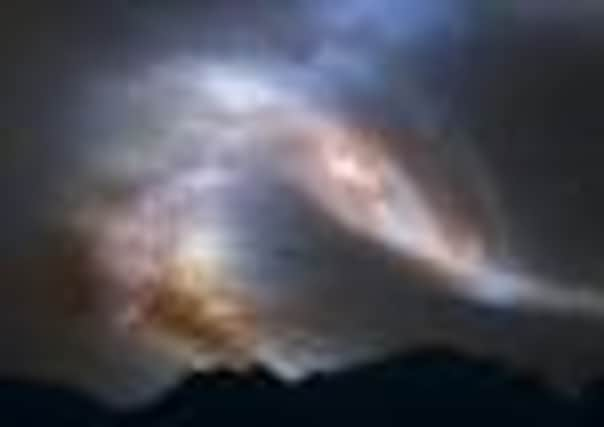Milky Way braced for massive collision - but not for another 4,000,000,000 years


• Andromeda galaxy set to collide with Milky Way
• Seven-year study predicts event ‘with certainty’
• Earth and our solar system ‘will not be destroyed’
The sun, Earth and hundreds of billions of stars will be flung through space as Andromeda, a galaxy currently 2.5 million light years away and travelling at 250,000mph, slams into the Milky Way, merging the two into a single galaxy with a new core, a new order and a new shape.
The cosmic showdown, which astronomers at the Space Telescope Science Institute in Maryland say they can make “with certainty” thanks to a meticulous seven-year study using the Hubble Space Telescope high above the earth, will begin in four billion years and take a further two billion years to unfold.
Advertisement
Hide AdAdvertisement
Hide AdThough astronomers have known for decades that Andromeda is heading our way no one until now has been able to predict whether the outcome would be a near miss, a mere side-swipe, or a head-on smash.
“After nearly a century of speculation about the future destiny of Andromeda and our Milky Way, we at last have a clear picture of how events will unfold over the coming billions of years,” said Sangmo Tony Sohn, an astronomer at the institute.
When they plough into one another, the two will be reshaped into a single elliptical-shaped galaxy. Stars and planets, including our own sun, will be flung into new positions orbiting around a new galactic core.
Despite the shake-up, astronomers say that because of the vast distances involved – the Milky Way is 120 million light years wide and Andromeda, also known as M31, almost twice that – individual stars within the galaxies will not collide with one another and Earth and our solar system are not in danger of being destroyed. They have run computer simulations to help forecast what will occur.
“In the worst case scenario simulation, M31 slams into the Milky Way head on and the stars are all scattered into different orbits,” said Gurtina Besla of Columbia University in New York, who was part of the study team.
“The stellar populations of both galaxies are jostled and the Milky Way loses its flattened pancake shape ... The galaxies’ cores merge and the stars settle into randomised orbits to create an elliptical-shaped galaxy.”